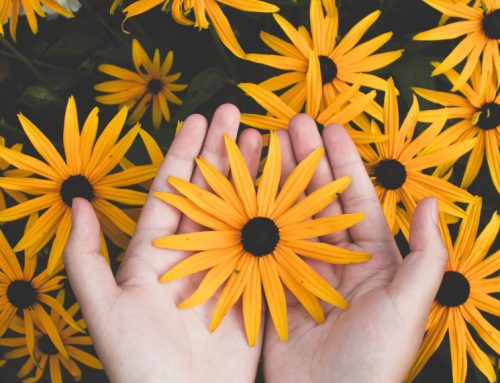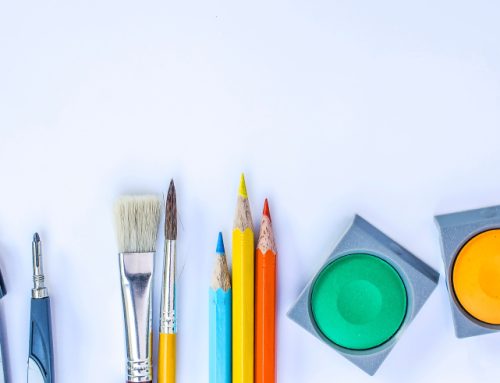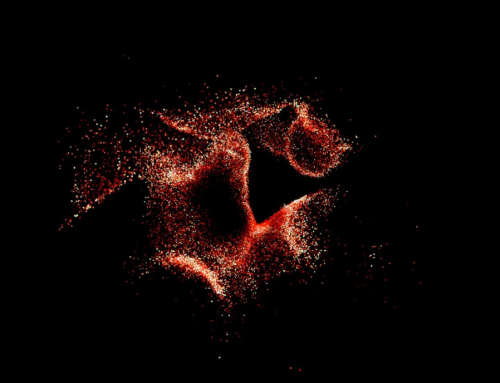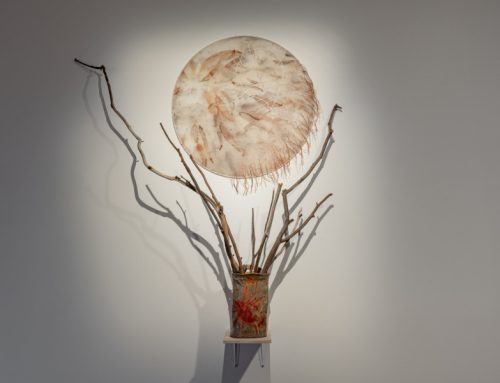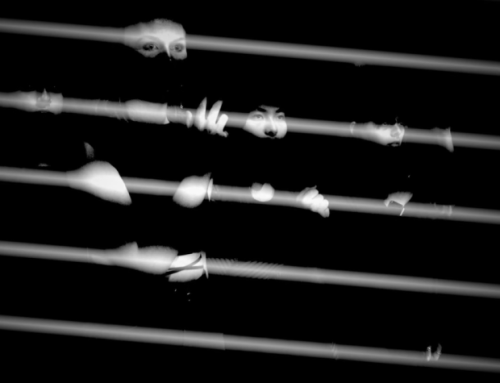Fiona Davies is a visual artist whose practice is a trans-disciplinary collaborative investigation into the systems, materials and processes of medicalised death in ICU. She has been awarded a PhD (University of Sydney) and holds a B.S. (UNSW), a Bachelor of Visual Art (UWS) and a MFA (Monash). She lives and works on Darug and Gundungurra land. In an interview with the Arts Health Network, Fiona gives a deeper insight into her artistic practice.
What initially inspired your journey as an artist?
Growing up as the youngest of three children, self contained and focused, I spent most of my time either making art or planning how to buy a horse. When making art I tended to the sculptural and material based. I spent hours preparing the materials to make mosaics and what used to be called fairy pictures. These were made using flowers, leaves, moss and twigs by embedding them into a tray of wet sand. I had seen very sophisticated versions of these ephemeral works in the craft section of a country show and was inspired to follow. There was a strong tradition of handweaving in my family and one of my Great-aunts taught me to weave initially on an inkle loom at about seven or eight. These interests all coalesced into enrolling in an applied science degree at UNSW in Textile Technology and worked in product development in a carpet factory for several years. At twenty eight I wanted to change my focus to revaluing the handmade and started an undergraduate art degree at Western Sydney where science, art and textiles were combined.
What led to your interest in the medical system?
In late 2000 my father was admitted several times to his local country hospital before finally ending up in a major hospital near the centre of Sydney. Fairly soon after, that he had an operation to repair two large aortic aneurisms close to his heart. Over the next days, this morphed into a series of operations. After four days, Dad was transferred to intensive care where he stayed for four and a half months. I had not had much exposure to hospitals prior to this and my experience of Dad being in ICU was transformative. After the initial adrenalin subsided I found I became interested in the systemic characteristics of the situation and in particular the emotional landscape of that environment.
By 2006 I felt able to make art work responding to these lived experiences. I chose to work with three sites that I felt were critical to how Dad defined himself. They were the country town where both my parents grew up, the University where dad did his first degree and the second University where he did a postgraduate degree.

Memorial/Double Pump Laplace, 2006, fabric, found objects, thread and buttons, dimensions variable. Installation view, Church of St Marks, Aberdeen, Australia.
Two really critical foundations to my arts/health practice were developed during these three installations. The first installation was in Aberdeen in the Anglican Church and was titled Memorial: Double Pump Laplace I. Aberdeen in country NSW is a former meatworks town of around 1500, now servicing the mines down the valley. The first day that the exhibition was open coincided with the local pumpkin festival which meant that people were able to visit without it being a big deal. That first day, I talked for about six hours about my experiences during the time Dad was in hospital and his death and in turn listened to stories about their experiences in similar situations. The conversations were profound and to some extent unexpected given the stereotype of country people being reticent to share.
The significance of the role art can play as a catalyst for conversation about health is a key component of my practice. I don’t document the conversations and think of them as additional layers of meaning with the only complete archive being in my memory. One exception is a video recording of a participant who played my arts/health card game Racing Patience ICU at a Groundswell Conference in 2019.

Memorial: Double Pump Laplace II, 2009, sound, prints, found objects, dimensions variable. Installation view, School of Physics, the University of Sydney, Camperdown, Australia.
A second foundational element in my arts/health practice developed during the installation of my second work Memorial: Double Pump Laplace II for the foyer of the School of Physics at the University of Sydney. As an important component of the practice of physics is measurement and comparison of that measurement against a standard, I was looking to work with one of the daily rituals of ICU, the taking of blood samples, testing, fiddling with the drugs if the parameters were out of range, then retesting and repeating the process if necessary.
There I met the researcher, the late Dr Peter Domachuck, who was working on developing a photonic medical device from fibrion a component of silk in order to be able to read the properties of blood while that blood was still within the body. In other words replacing the need for external destructive testing. We started working collaboratively on a project titled Blood on Silk, by thinking and talking about a wide range of broad societal issues that were thrown up by the development of this medical device.
What are some of the issues that you identified through your collaboration with Dr Domachuck?

Blood on Silk: Last Seen, 2017, mixed media, installation view, Casula Powerhouse Arts Centre, Casula, Australia. Photo credit A. Todic.
The materiality of silk: a ‘natural’, protein fibre produced by an insect as the cocoon of the silkworm, triangular cross section, non allergenic. The material characteristics of refined silk / fibrion: transparent, castable or mouldable, conformable to flat or patterned surfaces, cast or spin coat. The concepts of liveness of internal feedback: reading the body in real time, the possibility of self monitoring, instead of the sample being removed from the body to be read, it remains part of the body, the testing process is internalised rather than an external process. The cultural history of silk: ‘silk routes’ as pathways of commercial, cultural and technological exchange. The environmental impacts of silk production as a ‘green’, ‘sustainable’ product. The ethical debates: elements of the animal rights movement disapprove of the death of silkworms in the process of obtaining silk, objections to testing of implantable chips in animals/humans and ethical issues regarding surveillance or monitoring.
Can you tell us about your current project?
My interest in these issues led me to enroll in a practice-led PhD programme at SCA researching ‘medicalised death’ in ICU, that is, death that is seen as a medical problem. I wanted to use this opportunity to focus to the exclusion of nearly all else in my practice in order to understand aspects of these specific events in these specific locations yet remain open to new connections, thoughts and works.
In my most recent performative work from 2022 Once upon a time, long ago and far away: A Short History of Removal the lived experience of the patient is recentered in a performative lecture where elements of the patient experience in hospital are contextualised by an initial fairy tale followed by fragments from academic papers that speak to the specifics of that lived experience. As an example in this spoken word performance one section addresses the wearing of the uniform of the patient, the hospital gown. This is contextualised by academic studies that explore the (un)fitness for purpose of the garment design, the concept of enclothed cognition (i.e. you tend to behave as expected when wearing certain types of clothing) and the additional load of these expectations on those with chronic conditions or non standard body types.

Once upon a time, long ago and far away: A Short History of Removal, 2022, performative lecture, installation, and video 45 to 50′, installation view, Rhomboid Studio and Performance Space, Mount Victoria, Australia. Photo credit Alex Gooding.
At the end of the performance the audience come forward to gather around a table of modified Tupperware containers that act as DIY medical image readers. Here again, as in the first installation in Aberdeen, the art work holds the space and acts as a catalyst for conversation encouraging the audience to share their lived experiences of similar situations. This ability to share their experiences in an environment where people are interested is of significant value as it allows the artist, participants, and audience to contextualise their experiences within the group.
What are your future plans for this project?
In the future I am intending to continue refining this specific work by re-evaluating each fairy tale, and each academic paper and considering the impact of all ten of the segments either as part of the whole or with the possibility of performing each segment as an individual performance. This work can easily be updated as new academic research feeds new ways of looking at aspects of the patient experience into this performative lecture.
More information regarding Fiona and her upcoming projects can be found on her website https://www.fionadavies.com.au/

